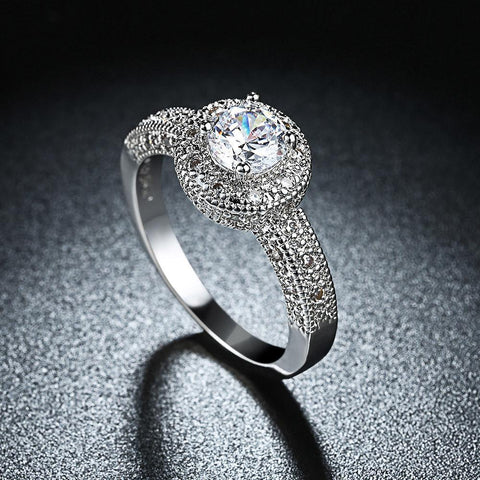How Much Should I Spend On An Engagement Ring?
If you’re thinking of asking your loved one to marry you, it can be a very exciting time. You will be thoughtfully planning exactly how to pop the question, where to do it, and when. One of the biggest parts of the proposal is the ring, and part of the planning is finding the perfect engagement ring.
It’s no wonder this part of the process can sometimes cause a little stress. You’re choosing a ring that signifies your love and devotion, and it’s an item of jewelry that will be worn forever, so you want the ring to be perfect. If you’re wondering how much you should spend on an engagement ring, we are here to offer some guidance and options. The good news is that there is no one-size-fits-all answer. We'll outline some of the traditional "rules" and some more modern and flexible thinking.
One, two, or three months' salary
One of the most well-known "rules" on purchasing an engagement ring is that you spend two months' salary on the ring. This means that if you earn around $60,000 per year, you should be spending a massive $10,000 on an engagement ring. Sadly, this is just not practical for many Americans and doesn’t take into account personal financial situations, such as debt, housing costs and other obligations.
The two months' salary rule was actually created by one of the big jewelry companies, and it’s no surprise that they would want to encourage people to spend more than necessary on an engagement ring. The amount started at a month’s salary and was upped to two, which is the most commonly known rule. There is now, in fact, talk that the figure should be three months' salary, which would take the cost up to an incredible $15,000 on a yearly salary of $60,000.
Average cost
Some people believe that spending the average figure is a good balance. In the US, that figure is over $6,000. There is variation in regions, but this is still a hefty outlay and a figure that is out of reach for many people.
The bottom line is that you shouldn't feel you have to spend any particular amount of money. You must carefully look at your personal finances and long-term circumstances before committing to any big purchase. Even if you can spend the equivalent of two months' salary, it may be that it is more important for you and your partner to save for a house or travel the world. Only you know how important the price of jewelry is to you and your partner.
What if this is out of your budget?
What should you do if the two-month rule is just way out of reach for you? Many people are struggling to make ends meet, and many young couples are saving for their future. This shouldn’t mean that you can’t pop the question and present your loved one with a gorgeous ring; you may just have to think outside the box.
Don’t think about what you "should" spend
Instead of thinking about what you "should" spend, it’s best to think about what your loved one would actually like. Don’t feel pressured into spending a certain amount of your hard-earned salary just because of some so-called rule. Instead, consider lower-priced options and think carefully about the sort of jewelry your partner would love to wear.
You don’t need to buy a diamond

If you aren’t committed to buying a diamond, you can certainly get a lot more for your money, but that doesn’t mean you can’t have the beauty of a diamond ring. A simulated diamond like the one in this Sterling Silver Simulated Diamond Halo Ring can have all the beauty and sparkle of a real diamond. Crystals, such as those in this 1.90 Cttw Single Crystal Multi Pave Engagement Ring, for example, certainly make an impact.

It may be that your partner likes other gemstones and would prefer something other than a diamond. A ring with a stone such as an emerald, such as this Vintage Black Plated Emerald Berenice Ring, would look particularly stunning as an engagement ring and you could even choose a stone that is meaningful for your loved one, such as their birthstone.

Don’t let traditions and "rules" cause you stress when choosing an engagement ring. Instead, just think carefully about your circumstances and concentrate on your partner’s own style and what she would like to wear.

